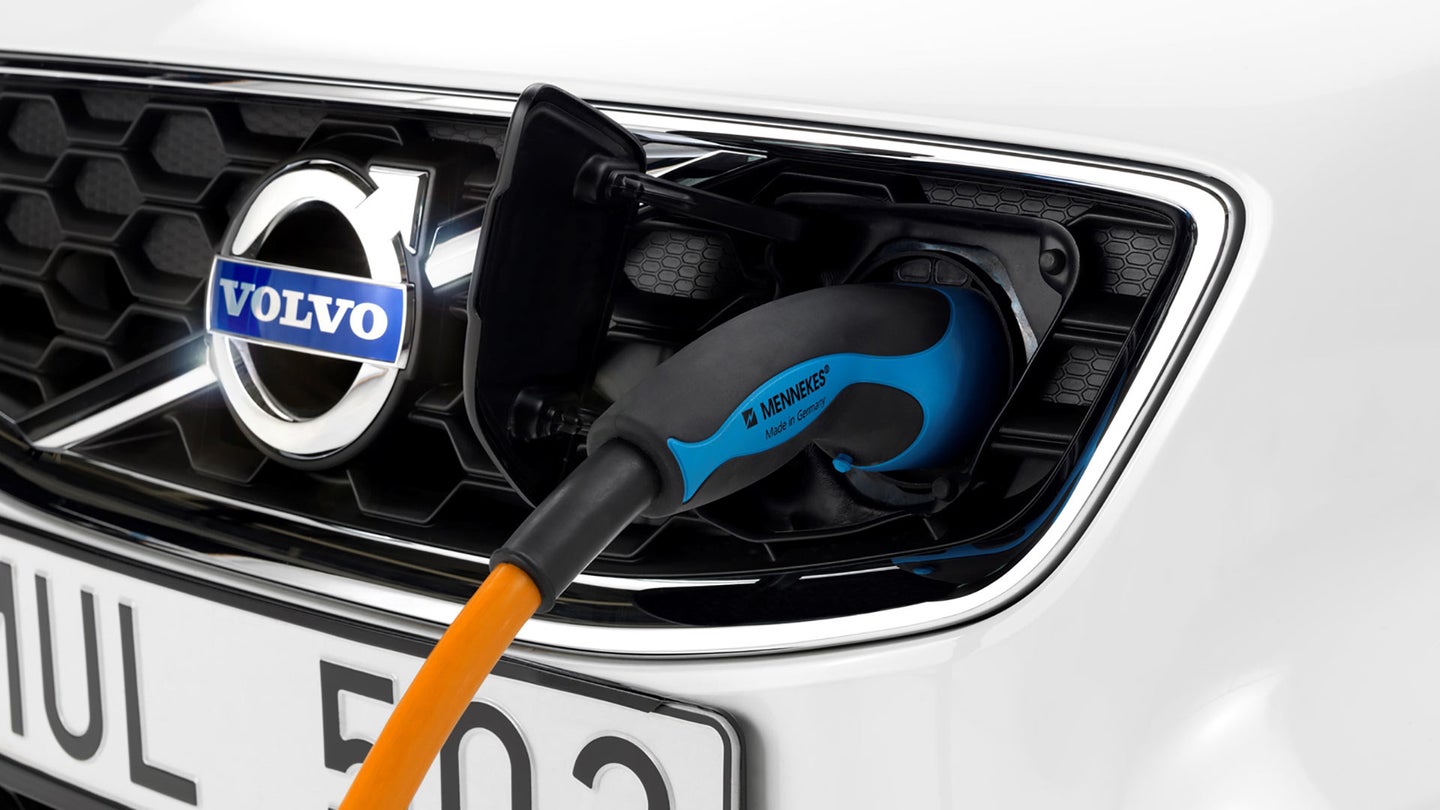What Volvo’s Electrification Announcement Really Means—and What it Will Take to Accomplish
Volvo’s future plans put it on a different path from other established automakers.

Volvo just made a major commitment to electrification. Beginning in 2019, it will stop introducing new models with standalone internal-combustion engines. From that point, every new Volvo will have a 48-volt mild hybrid, plug-in hybrid, or battery-electric powertrain.
That makes Volvo the first major legacy automaker to commit to exclusively selling vehicles with some form of electrification. It's something many industry analysts have speculated will need to happen to meet future emissions standards, but is Volvo really making a smart investment in the future, or a risky gamble?
First, it's worth noting that even after 2019, the majority of new Volvos could still drive a lot like today's gasoline models. Volvo does plan to launch five all-electric models between 2019 and 2021, and will probably grow its lineup of plug-in hybrids, but 48-volt mild hybrids will probably account for most of its sales. And those cars shouldn't be confused with Priuses, either.
Unlike conventional hybrids, mild hybrids can only provide a limited amount of electric assist to an internal-combustion engine. They usually have small battery packs and motors, sometimes too small for sustained all-electric driving. But a mild hybrid system can take some of the load off a gasoline or diesel engine, and also power electrical accessories to further reduce fuel consumption. Mild hybrid systems are also cheaper and easier to develop than conventional hybrid powertrains.
Adoption of mild hybrid powertrains will allow Volvo to put a lot of electrified cars on the road quickly, but those cars will still rely on their internal-combustion engines most of the time. That means many drivers probably won't notice the difference over a conventional internal-combustion powertrain, which could make the whole thing easier for Volvo to sell to consumers.
Even if mild hybrids account for he majority of its sales, Volvo will still significantly increase the number of plug-in hybrids and all-electric cars it manufactures. To do that, it will need a lot of batteries. Volvo hasn't announced a new battery-supply deal, or plans for its own battery factory along the lines of Tesla's "Gigafactory," but that might be the next step in its electrification push.
At a press conference Wednesday, Volvo CEO Håkan Samuelsson issued a challenge to suppliers, according to Automotive News Europe. He said Volvo's decision to electrify all of its future powertrains proves that suppliers of batteries and charging equipment can count on Volvo as a customer, and encouraged companies to make new investments in those areas. Volvo may also need to make its own investments in public charging stations to support its new electric cars and plug-in hybrids.
The electrification shift presents several issues, though Volvo is relatively well positioned to overcome them. It already has a relatively small lineup of vehicles that, crucially, doesn't include any pickup trucks or body-on-frame SUVs, two segments were electrification has proven challenging. Consolidation of the lineup onto two basic platforms—SPA for large and midsize models, and CMA for compacts—means a relatively small number of powertrains can be shared across a wide variety of models, reducing development costs.
Besides reducing emissions, a lineup of electrified vehicles could also help position Volvo for other tech trends. Beefed-up electrical systems and lithium-ion battery packs can handle the increased demand from more complex infotainment systems and the raft of sensors and computers needed to enable autonomous driving, an area in which in which Volvo is very interested.
Volvo has a lot to gain by ditching standalone internal-combustion engines, but a lot of work will be required over the next two years to accomplish that. If Volvo is successful, it could encourage other automakers to make the same leap.
